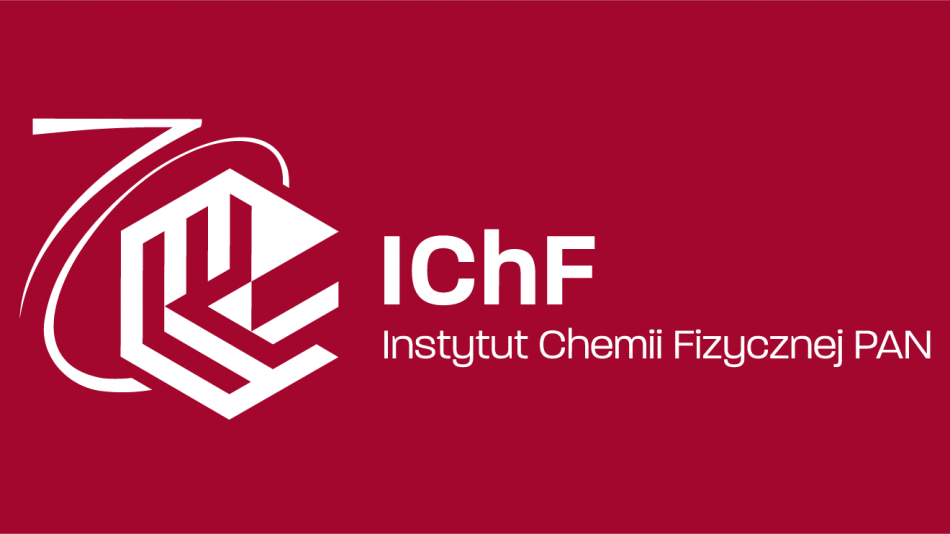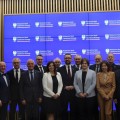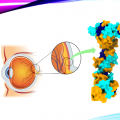70 years of the Institute of Physical Chemistry, Polish Academy of Sciences (IChF)
Reading time: about 4 minuts

The Institute was established in 1955 as the first chemical institute of the Polish Academy of Sciences, which had been launched 3 years earlier. According to the act of appointment, its mission was “…research on current issues of physical chemistry, important from the point of view of the development of chemical sciences and national economy”. In other words, fundamental and applied research in physical chemistry was considered equally important. But how did it all begin?
The establishment of the Institute was initiated by Wojciech Świętosławski – a famous thermochemist – and eminent electrochemist Michał Śmiałowski; both became the first two directors of the Institute. They were joined by other top Polish physicochemists: Wiktor Kemula, Włodzimierz Trzebiatowski, and Stanisław Bretsznajder. The research was conducted in 7 departments in areas reflecting the passions of their heads and the needs of the national economy. At that time, the Institute’s laboratories were scattered throughout universities nationwide – in Warsaw, Kraków, Lublin, Rzeszów, and Wrocław, where the heads of the Institute departments held professor positions. Eventually, construction of the Institute headquarters started in 1959 at the corner of Kasprzaka and Płocka streets in Warsaw. It was completed in 1965, providing space for laboratories and administration but also for mechanical, glass, and electronic workshops, a library, and an auditorium. Most of the employees and laboratories moved to the new premises, whereas some of the departments later grew into other PAS institutes, such as the Institute of Catalysis and Surface Chemistry in Kraków and the Institute of Low Temperature and Structural Research in Wrocław. In the late ‘60s, new scientific leaders such as Zbigniew R. Grabowski, Bogdan Baranowski, Władysław Malesiński and Jan Stecki, to name a few, appeared and expanded research in the areas of photochemistry and spectroscopy, metal hydrides and thermodynamics, and the number of departments increased. In the ‘70s and later, research at the Institute was mainly focused on fundamental problems in physical chemistry. Despite this, in 1972, the R&D unit “Chemipan” was established for technology transfer to small-scale production. Until today, it is an essential player in the market of chemicals for forest protection. Although new areas such as supramolecular chemistry appeared in the ‘80s, the Institute struggled with poor funding, deteriorating infrastructure, lack of influx of young scientists, and outflow of scientists abroad. This situation did not change much in the ’90s, though the introduction of a grant system in Poland increased the activity of some researchers. In 1997, the Institute gained legal personality, while remaining a member of the network of institutes of the Polish Academy of Sciences. However, its funding shifted from the Academy to governmental agencies.
Only after 2000 did the real change start, with an increasing number of PhD students and young researchers (also from abroad) developing their scientific careers with the Institute, bringing new areas, sometimes far beyond physical chemistry. Support of dynamic research groups led by young, emerging scientists allowed Robert Hołyst, Director at the time, to realize a new development strategy for the Institute. Research areas at the intersection of chemistry, physics, and biology and the integration of theory with practical applications became the Institute’s mission. A striking example of the new strategy was the founding of large research units, such as the International Centre for Translational Eye Research, led by Maciej Wojtkowski, which focused on applying optics in medicine, far from traditional physical chemistry. Strengthening the role of the leaders of the 30 or so research groups has contributed to fostering internal collaboration and increased efficiency in obtaining grant funding. The Institute's interactions with the global scientific community have intensified, not least by inviting top scholars who bring excellent science to the institute and inspire the younger generation of researchers. Construction of a new building commenced in 2010, and gradual refurbishment of the old ones has provided new and well-equipped modern laboratories to accommodate new research groups. Last but not least, favourable conditions were also provided for the creation and development of spin-off companies. Among these, Scope Fluidics, founded by Piotr Garstecki, remains the most successful. Since 2024, the International Advisory Board of the IChF has supported the Director in shaping the further development of the Institute. All these activities have transformed the Institute and prepared the ground for its hopefully bright future.
The first meeting of the Scientific Council on 4th June 1955 was probably the most important event of the beginnings of the Institute and seen as its symbolic establishment. Therefore, we decided to celebrate its anniversary exactly 70 years later. Let’s meet on 4th June 2025 and enjoy a cocktail of memories, science, food and drinks, and a social event. IChF is now at 70 and beyond physical chemistry.
Prof. Dr. hab. Marcin Opałło, Head of the team organizing the 70th-anniversary celebration event
Dr. hab. Adam Kubas, IChF Director
- Date: 14.04.2025





